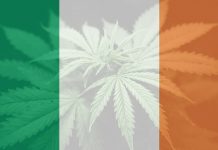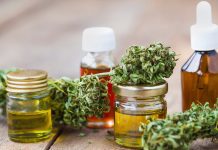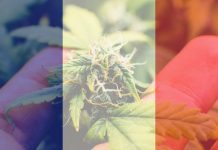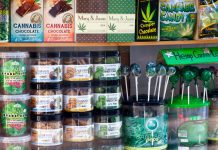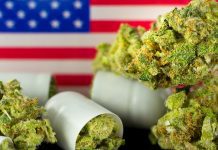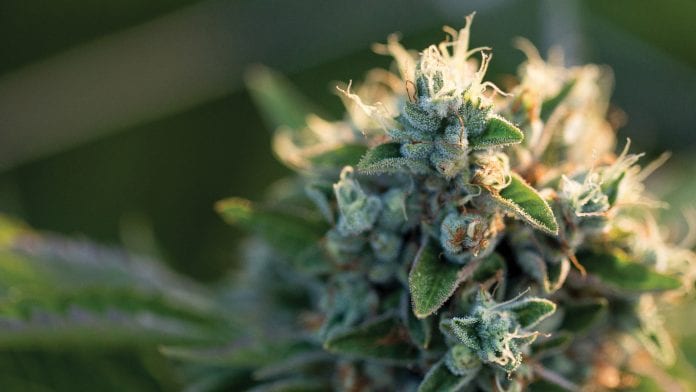
Will the Polish medical cannabis market set itself ahead of the game in Europe as the medical cannabis industry evolves?
The Polish medical cannabis market is becoming more and more open. Does this mean that Poland, step by step will move towards further changes in legal regulations and in the future will become a leader in the medical cannabis market?
In order to answer the aforementioned question, one should consider such issues as how current Polish legal regulations affect the possibilities of placing medical cannabis on the market.
Legal possibilities for the cannabis sativa market – CBD
The Polish legislator allows the cultivation of hemp for nutritional, pharmaceutical, cosmetic, chemical, textile, pulp and paper industries, including the production of building materials and seed production. Similarly, there are no restrictions on its import, export and processing.
Cultivation of cannabis sativa L. hemp, in which the total content of delta-9-tetrahydrocannabinol (-9-THC) and tetrahydrocannabinolic acid (delta-9-THC-2-carboxylic acid in the flowering or fruiting tops of plants from which the resin has not been removed) does not exceed 0.2% of dry mass may be carried out with an appropriate permit, in designated areas of the state, on a strictly defined surface, using seed of the elite or certified category (within the meaning of the seed regulations).1
The cultivation permit is issued by the commune head, mayor or city president competent for the location of cultivation. The condition for obtaining a permit is no criminal record for the offenses referred to in art. 63, 64 or 65 of the Act of July 29, 2005 on counteracting drug addiction. i.e. for:
- The illegal cultivation of poppies, hemp or the coca bush;
- illegal cultivation of low morphine poppy or fibre hemp; and
- seizure for the appropriation or theft of narcotics, psychotropic substances, new psychoactive substances, milk or poppy straw.
Growing hemp is only possible:
- On a specific area, in designated areas, on the basis of a permit for cultivation, using seed of the elite or certified category; and
- After making a cultivation contract concluded with an entity authorised by the voivodeship marshal to operate in the field of buying hemp.
In the case of processing hemp from their own cultivation for the needs of the textile, chemical, cellulose and paper as well as food, cosmetic, pharmaceutical, building materials or seed industries, the farmer makes an appropriate commitment to the voivodeship marshal competent for the place of cultivation, within 14 days of sowing them.
Currently, there are no regulations in Polish law that could limit the way in which hemp is processed, i.e. those which specify the final product from the cultivation or processing of this type of plant (oil, dried, honey from CBD, etc.), provided that the final intended use will be consistent with the catalogue described above.
It is worth emphasising that CBD cannabinoid can be used in cosmetics. These types of products arouse a particular interest in customers and tend to appear in Poland more and more often. Until now, CBD could not have been used in the food industry. The reason is the lack of recognition of CBD-enriched food as a novel aliment. The Polish Chief Sanitary Inspector has only recently specified the conditions that must be met in order for CBD products to be used for food purposes. These are new legal provisions, and these paths have not yet been practically studied.
The circumstances described above stimulate the Polish hemp market and increase the number of producers of at least CBD oil. Similarly, the interest of Polish farmers in the cultivation of hemp is enhancing. The growing area of hemp cultivation is illustrated in the table below.
The above data were prepared on the basis of agricultural producers declarations and relate only to the area of crops located on registration plots submitted in applications for agricultural subsidies made by the Agency for Restructuring and Modernization of Agriculture.2 However, not all Polish farmers declare their crops to this institution.
Analysing the possibilities of growing and producing products containing CBD, it should be mentioned that no guidelines regarding the quality of such products or their designations were introduced. This means that the producer of CBD oil is not obliged to determine the level of CBD in the product. Such a product can be purchased without medical prescription. Similarly, there are no guidelines on how to use CBD oil, how to calculate its dose depending on body weight and whether special precautions should be taken when consuming it together with other products (e.g. honey, wine, beer).
Legal possibilities for the medical cannabis market – THC
In November 2017, amendments to the Act on counteracting drug addiction entered into force. According to the newly introduced art. 33a (cited in paragraph 1):3
“Herbs other than fibrous hemp and extracts, pharmaceutical tinctures, as well as all other non-fibrous hemp extracts and non-fibrous hemp resin referred to in the provisions issued under Art. 44f, may constitute a pharmaceutical raw material referred to in art. 2 point 40 of the Act of 6 September 2001 – Pharmaceutical Law, intended for the preparation of prescription drugs referred to in art. 3 clause 4 point 1 of the Act of 6 September 2001 – Pharmaceutical Law, after obtaining the marketing authorisation issued by the President of the Office for Registration of Medicinal Products, Medical Devices and Biocidal Products, hereinafter referred to as the ‘President of the Office.’
Art. 2 point 40 of the Act of September 6, 2001 – the Pharmaceutical Law Act, gives a definition of pharmaceutical raw material. According to the wording of the aforementioned provision, ‘the pharmaceutical raw material is a substance, or a mixture of substances used in the preparation or manufacture of medicinal products.’” The pharmaceutical raw material, by definition alone, can be used to manufacture more than one medicinal product.4
In accordance with art. 2 points 32) the Pharmaceutical Law Act:
“A medicinal product is a substance or a mixture of substances, presented as having properties for the prevention or treatment of diseases occurring in humans or animals or administered for the purpose of diagnosis or for the restoration, improvement or modification of the physiological functions of the body through pharmacological, immunological or metabolic action.”
Pursuant to Polish law, hemp in a certain form may constitute a pharmaceutical raw material intended for the preparation of prescription drugs (Article 33a in connection with Article 3 (4) point 1 of the Pharmaceutical Law Act), after obtaining a marketing authorisation. This authorisation in the form of a decision is issued for a period of five years by the President of the Office for the Registration of Medicinal Products, Medical Devices and Biocidal Products (Article 33a (2) and (3) of the Act).
An analysis of the definitions of the terms ‘substance’, ‘pharmaceutical raw material’ and ‘medicinal product’ shows that it is not possible to normatively identify the terms substance and medicinal product, even if ultimately the active substance in a given medicinal product is one pharmaceutical raw material consisting of one substance.5
On the other hand, the manufacture of a medicinal product is considered to be any activity leading to the creation of a medicinal product, including the purchase and receipt at the place of manufacture by the manufacturer of materials used for production, production, admission to subsequent stages of manufacture, including packaging or repackaging, and storage and distribution of manufactured medicinal products covered by the application for manufacturing authorisation, as well as control activities related to these activities (Article 2 point 42 of the Pharmaceutical Law Act).
Polish law indicates that it is not possible to grow medical cannabis in which the total content of delta-9-tetrahydrocannabinol and tetrahydrocannabinolic acid (delta-9-THC-2-carboxylic acid content in the flowering or fruiting tops of plants from which the resin has not been removed), exceeds 0.2% of dry mass. This type of product can only be imported into Poland and put on the market based on the permits used.
Permission to import medical cannabis (key legal regulations)
The first step towards introducing medical cannabis to the Polish medical market is obtaining a permit to import medicinal products.
An application for such a permit should be submitted to the Main Pharmaceutical Inspector in paper or electronic form. The application (pursuant to Article 39 of the Pharmaceutical Law Act) must contain:
- Name, address and place of residence of the entity applying for the permit;
- Entry number in the National Court Register or a declaration of obtaining an entry in the Central Register and Information on Economic Activity, as well as a tax identification number (NIP);
- Determining the type and pharmaceutical form of the medicinal product;
- Determination of the place of business in the field of importing the medicinal product; and
- Definition of the scope of the medicinal product import.
The application should be accompanied by the Main Documentation of the Business Place prepared in accordance with the Good Manufacturing Practice requirements and a list containing the name, dose and pharmaceutical form of manufactured or imported medicinal products.6
If the conditions for obtaining the permit are met, the Main Pharmaceutical Inspector issues the permit for an indefinite period.
These types of conditions include:
- The applicant’s possession of appropriate rooms and technical devices necessary for the import, control and storage of medicinal products; and
- Employment of the Qualified Person by the applicant (who is the Qualified Person, see Article 48 of the Pharmaceutical Law Act).
The medical cannabis importer who has obtained the authorisation to import this product is entered in the Register of Manufacturers and Importers of Medicinal Products and has the obligations described in art. 42 of the Pharmaceutical Law.
The most important duties include:
- Import of only medicinal products within the scope of the authorisation;
- Distribution of imported medicinal products;
- Storage of archival samples of medicinal products under the conditions specified in the authorisation, for a period longer by one year from the expiry date of the medicinal product, but not less than three years;
- Providing access to the Chief Pharmaceutical Inspector for inspections of premises in which activities are carried out in terms of manufacturing or importing a medicinal product, documentation and other data on manufacturing or importing a medicinal product, as well as permissions to take samples of medicinal products for qualitative research;
- Applying the requirements of Good Manufacturing Practice in terms of distribution of medicinal products;
- Checking whether the manufacturers and distributors of the active substance used in the manufacture of the medicinal product meet the Good Manufacturing Practice requirements and Good Distribution Practice requirements of the active substances, by carrying out audits on the manufacturers and distributors of the active substance, alone or on the basis of an agreement with an independent entity from both the manufacturer or importer of medicinal products commissioning the audit, as well as from the manufacturer or distributor of the active substance, in which the audit will be carried out; and
- Checking the authenticity and quality of the active substance and excipients intended for the manufacture of the medicinal product.
The medical cannabis importer may obtain the active substance:
- From third countries, provided that they have an entry in the National Register of Manufacturers, Importers and Distributors of Active Substances as the importer of the active substance; or
- From entities entered into:
- The National Register of Manufacturers, Importers and Distributors of Active Substances; or
- A register kept by the competent authority of a Member State of the European Union, a Member State of the European Free Trade Agreement (EFTA) – parties to the agreement on the European Economic Area or a state which has concluded an agreement on mutual recognition of inspections with a Member State of the European Union or a Member State of the European Agreement on Free Trade (EFTA) – party to the agreement on the European Economic Area in which they are based – after verifying that the entity is entered in the relevant register.
Medical cannabis marketing authorisation (most important legal regulations)
The next step towards placing medical cannabis on the Polish market is obtaining marketing authorisation from the President of the Office for Registration of Medicinal Products, Medical Devices and Biocidal Products (hereinafter the President of the Office).
In order to obtain such permission, the applicant submits an application containing (Article 33c of the Act on counteracting drug addiction):
- name of the pharmaceutical raw material and name of the active substance;
- the size of the packaging;
- the name and permanent address of the responsible entity within the meaning of the Pharmaceutical Law Act, submitting the application, and data on the manufacturer or manufacturers within the meaning of this Act, if the responsible entity is not the producer of the raw material;
- list of documents attached to the application; and
- the President of the Office, after examining the application, issues a marketing authorisation for five years or refuses to issue such authorisation (these decisions can be appealed).
The President of the Office shall refuse to issue a permit if:
- The application and the documentation attached to the application do not meet the requirements set out in the Pharmaceutical Law Act;
- The results of the research show that the medicinal product has a risk of use disproportionate to the expected therapeutic effect in terms of the indications, contraindications and recommended dosage given in the application;
- The results of the research show that the medicinal product does not show the declared therapeutic efficacy or when it is insufficient; and
- The results of the tests show that the qualitative or quantitative composition of the medicinal product is not as declared.
Another important element regarding the introduction of medical cannabis to the market in Poland is that:
- Medical cannabis can only be sold by prescription and only in pharmacies;
- The import and sale of medical cannabis in a form other than dried hemp is not allowed; and
- Medical cannabis must be divided into smaller portions by the pharmacist before selling it to the patient.
Product and legal basis
The table below presents the current state of the market in relation to legal regulations.7
Currently, the Polish market of medical cannabis (THC) recipients (patients) is estimated at about 300,000 people, and it keeps growing. Some experts also provide data showing that soon this number can reach up to one million patients.
Dried cannabis available in Polish pharmacies has 19% THC and 1% CBD and, as some doctors believe, it is impossible to rationally treat and develop cannabinoid therapy with only one drug of a specific composition from a whole range of different varieties and plant compositions.
In addition, current sales prices for this product are significant (2019). On the Polish market, the cost of buying 1g is currently PLN 60-65 (EUR 12-15). It is estimated that in the standard case of treatment the patient requires receiving up to 30 grams of cannabis per month, which means that the potential cost of treatment per month is about PLN 1,800 (about EUR 412).
Bearing in mind the short experience of the Polish medical cannabis market, it can be stated that there is still not only the matter of limited availability of other products (with a different share of THC and CBD), but also the necessity to provide a proper education in this field for doctors and patients. First of all, providing the right knowledge about the use of medical cannabis, dosage, expected effects, availability, is a significant key to the further development of this market.
“In theory, any doctor can write a prescription for medical cannabis. In practice, few have sufficient knowledge about it. The Ministry of Health is reluctant to help change it, so the medical community is coping”, writes Polityka.pl.
A Polish doctor acquires knowledge about cannabis from conferences and training. They are organised by doctors themselves, as well as by other specialists who deal with the promotion of knowledge about the use of cannabis in medicine. One of such places is the Medical Marijuana Consultation Point, which was launched on July 7, 2015 at the Consulting Point in Pain Management Clinic and is run, among others by Dr Jerzy Jarosz.
It is noteworthy that at present the Polish legislator has begun analyses and consultations towards a potential introduction of a licence to grow medical cannabis in Poland. Such permission is considered to be granted to a public entity.
Summary
Analysing the changes that have been introduced to the Polish legal system, as well as looking at the current shaped medical cannabis market in Poland, it is possible to think that it is an extremely flexible and somewhat chaotic world. There are more and more patients waiting for the possibility of medical cannabis treatment. However, there is still too little education on this subject. In addition, despite the submission of many applications for consent to the import and distribution of medical cannabis, there is only one product distributed to Polish pharmacies.
Legal regulations regarding the sale of products containing as a main product CBD (after all, also with medical qualities), with a low THC (up to 0.2%) are quite broad, but also new in terms of time. It is worth noting that the Polish government is currently working on a new common agricultural policy for 2021-2027. One of the tasks of this policy is the processing of hemp inflorescences for pharmaceutical, cosmetic and food purposes, and this opens the path for extensive use of CBD.
The changes in Polish law, which concern the possibility of using THC by Polish patients, are happening faster nowadays. It raises expectations that the Polish medical cannabis market will grow even faster. Using the knowledge and experience of other countries, Poland can avoid many mistakes in this process and can show a dynamic development in this field.
References
- B. Kurze¸pa (in 🙂 A. Waz˙ny (ed.) Act on counteracting drug addiction. Commentary, ed. II, WoltersKluwer 2019.
- Agency paying out EU subsidies to farmers.
- Dz.U.2019.852 t.j.
- Judgment of the Supreme Administrative Court of October 1, 2013, reference number act II GSK877/12.
- This is the result of the well-established case-law of Polish administrative courts, including the judgment of the Provincial Administrative Court in Warsaw of 6 May 2011, reference number file III SA / Wa 2616/10, judgment of the Provincial Administrative Court in Warsaw of 10 March 2010, reference number file III SA / Wa 1730/09, judgment of the Provincial Administrative Court in Warsaw of January 22, 2010, reference number act III SA / Wa 1694/09.
- A detailed description of Good Manufacturing Practices is in the announcement of the Minister of Health of 18 March 2019 on the publication of a uniform text of the Regulation of the Minister of Health on the requirements of Good Manufacturing Practices.
- BearStone Global Sp.z o.o. Poland, Cannabis Market Analysis Poland, June 2019.
Patrycja Gabriela Bartosz-Burdiak
President
Orbis Cannabis Sp. z oo
+48 604 478 505
patrycja@orbiscannabis.pl
http://orbiscannabis.pl/
This article has also appeared in Health Europa Quarterly Issue 11, which is available to read now.


